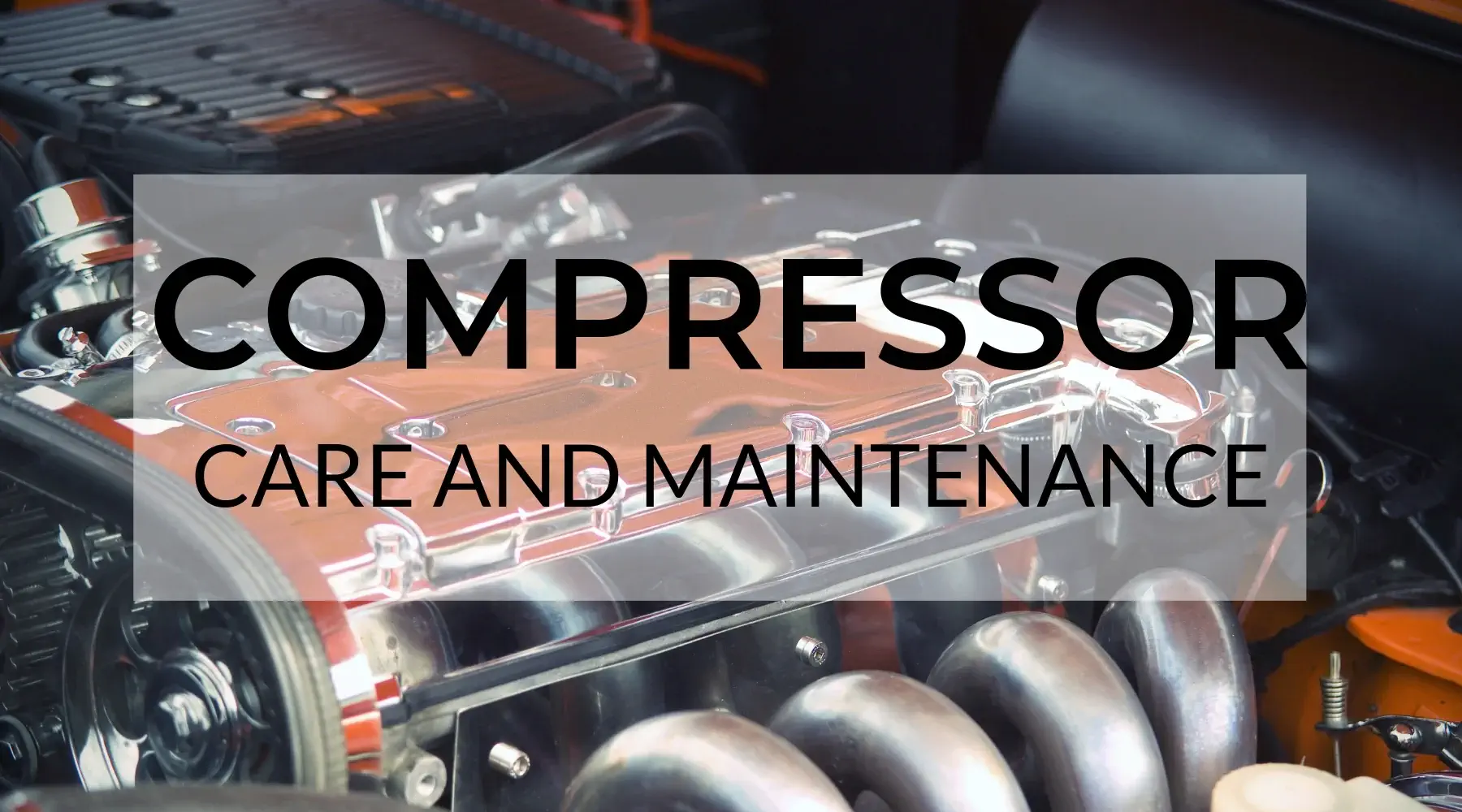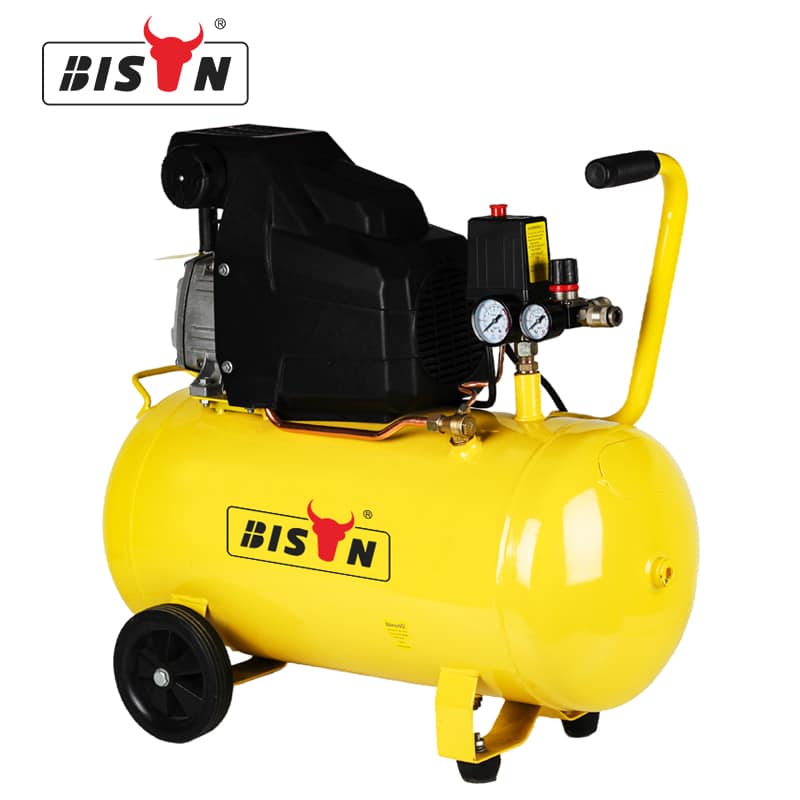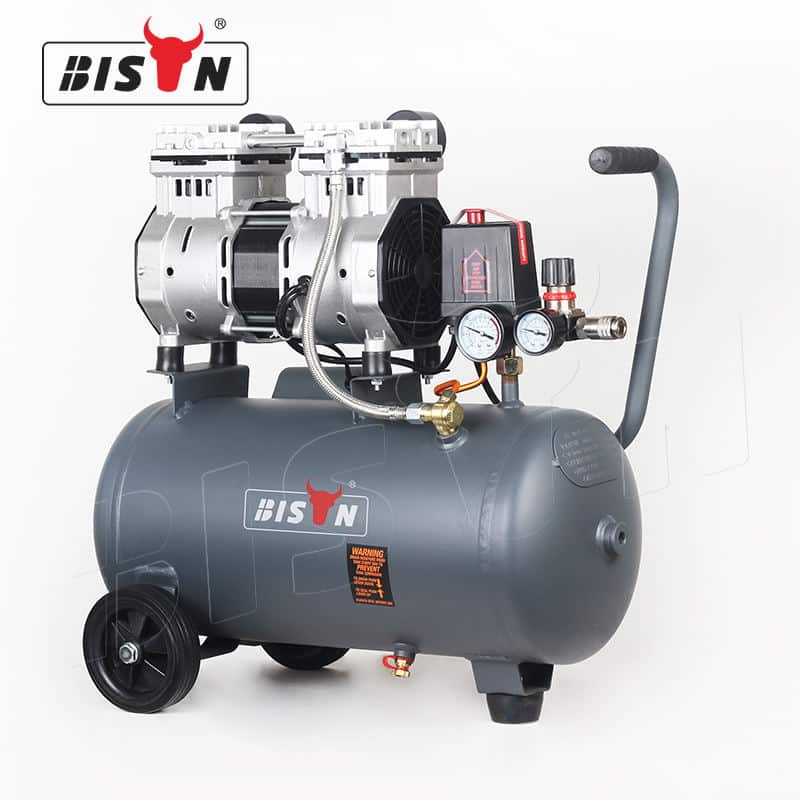air compressor blog
Air compressor maintenance tips
- Jun 28, 2023
Standard forms of maintenance are not enough for air compressors. To ensure the smooth running of operations and avoid disruptions and unplanned downtime, it is critical to develop a compressor maintenance plan to prevent (rather than respond to) problems with the air compressor and all connected tools and machinery.

Difference between preventive and standard air compressor maintenance
Maintenance is a standard procedure in small businesses, equivalent to replenishing toner and software and hardware upgrades. Essentially, standard maintenance is what you do with equipment that continues to work until it expires or is obsoleted by new technology.
In a facility that uses high-tech machinery, in order to guarantee the functionality and longevity of all the expensive equipment, you must undertake additional maintenance. For an air compressor, for example, you need to implement a preventative maintenance program that regularly inspects the compressor and its system peripherals to ensure everything is running optimally.
Preventive maintenance aims to catch mechanical problems before they spread and require expensive repairs and system downtime. Therefore, preventative maintenance includes inspections of all appropriate system components—some on a daily schedule, others on a weekly, monthly, quarterly or annual basis—to ensure everything is in order. If you catch a problem early, you can take steps to correct it.
In some cases, preventive maintenance involves low-cost measures that help avoid more costly situations. For example, when maintenance personnel notices a minor crack in a compressor belt, replacing the belt can help your company prevent a more costly situation where the belt breaks, the compressor stops working, and production stops as employees work to identify the problem and take necessary action steps to restore the system to normal operation.
Air compressor maintenance schedule
Due to the cumulative nature of performance difficulties, an air compressor maintenance programme must be put in place by all companies. This will help you remember which maintenance tasks need to be completed in a given day, week, month, season or year. Without this kind of schedule, it’s easy for companies to forget which machines and parts haven’t been maintained. With timely, proper maintenance, you can avoid the slowdowns and financial risks that often accompany compressor failure.
Air compressor maintenance tips
Air compressors use a series of processes to convert incoming ambient air into a power source for tools and machinery. Therefore, an air compressor consists of multiple components, each of which must be maintained to ensure its proper functioning. Basically, the compressor needs to change the oil, clean the filter and check the aftercooler every three months. It also requires changing the filter and tightening the connections at least once a year.
1. Read the user manual
The owner’s manual can be used to handle some of the most typical issues with air compressors. While it sounds simple enough, many air compressor owners completely forget the manual and turn to distress calls—even for some of the easiest problems to remedy. For example, there might be a problem with one of the connections or portals that might not make sense initially. A very common mistake, in this case, is for operators to manually modify things in hopes of fixing the problem. However, never attempt to repair anything on the air compressor without first reading the owner’s manual. Not following this step can cost you. An improper adjustment may void your warranty if you recently purchased your compressor.
Of course, you’ll need to be patient with the manual, as it may take a few minutes to find a solution to the problem. Regardless, an air compressor owner’s manual can help you fix some of the more common everyday problems the right way and avoid the types of mistakes that can void your warranty.
2. Daily pre-checks
Checking your equipment daily will help you avoid costly equipment breakdowns. It is very important to inspect the device for any damage thoroughly, and you should always double-check the in/out process of the device. As part of their daily pre-inspection, you should inspect hoses for kinks, inspect wires for cuts and fraying, inspect pipes for damage, and make sure connections are secure. Then, check the controls, gauges, accessories, and instruments to make sure there are no loose fittings or damage.
3. Tighten the nuts and bolts
As the air compressor wears out, some nuts and bolts are bound to come loose after months of daily use. After all, as a machine vibrates, so do the parts that make up the machine. Loose screws and fasteners aren’t a sign that the machine is falling apart, just that it’s time to pull out the wrench.
When one thinks about how easy it is to unscrew various household items, it’s no surprise that the nut on the compressor comes loose. This looseness is usually the result of vibration, which is exacerbated when an air compressor is used to power heavy tools.
To determine if a loose nut or bolt is indeed the problem at hand, manually test each fastener to see if there are any problems. Holding the wrench firmly, twist the loose fastener until you feel the bolt tighten. Only turn the nut to a position where it no longer moves. If you try to overtighten the nut, you may strip the bolt.
4. Clean the intake valve
In order for an air compressor to run at full capacity, it must have a clean intake. When you use the compressor for weeks on end, dust particles and other elements that combine with air are bound to be drawn into the vents. As a result, it’s crucial to frequently clean the vents.
Problems due to clogged air intakes can be persistent if you use an air compressor for tools that generate dust elements. For example, pneumatic sanders and woodcutters inevitably produce hard dust particles that can quickly accumulate inside the vents.
The intake valve can also become dirty in a work environment with various air-bound particles. When the ground on a construction site is broken, the pneumatic tools used in the process throw up dirt particles into the air. The same is true for factories that pack culinary products like flour, salt and sugar in containers, bags and boxes.
To ensure the quality of the incoming air, clean the intake valve at least every three months regardless of the workplace setting.
5. Check the hoses
The hose is the element of an air compressor assembly that is most susceptible to damage. As a component that transmits compressed air between the machine and a given endpoint, the hose should be solid and tight but loose and flexible. As a result, hoses are subject to a lot of work and are prone to stress over time.
Inconsistent air pressure can exacerbate the problem. If the pressure is too high, the hose will stretch while transferring air from the machine to a given air tool. If the overpressure period is followed by a period of underpressure, the hose will contract slightly. Bending and folding can easily cause damage as the hose moves around.
Check the hoses regularly to ensure the compressor does not lag due to hose wear. If you notice creases or signs of wear, replace the hose with a new one. If ignored, a worn hose can make your air compressor inefficient.
6. Replace the air filter
Replace the air filter
Throughout the daily life cycle, the filter inside the air compressor traps a lot of waste. Filters are designed to withstand heavy loads. Without a filter, dust and other impurities can easily drag down the air compressor and reduce the performance of air tools.
Air purity is critical for applications using pneumatic painting and drying tools. Just imagine what these applications would look like without this air filtration process. For example, painted surfaces may end up being spotted, sandy, or inconsistent in other ways.
In an assembly plant, the quality of an air filter determines the success or failure of an entire product line. Even if the problematic assembly line can be salvaged, the pneumatic application that caused the problem must be redone.
However, even the filter has its own limits. While the filter’s job is to collect all the dust that could infect the compressed air and degrade the quality of endpoint operation, as the filter fills up, the filter’s capacity worsens. Therefore, it is crucial to replace the air filter every year.
7. Drain the condensed water from the water tank
An inevitable by-product of compressed air is moisture, which accumulates inside the machine in the form of condensation. The moisture tank inside the air compressor is designed to draw moisture out of the outgoing air. By doing this, the air will still be dry and unpolluted when it reaches the finish.
In situations where the endpoints are prone to water damage, moisture in compressed air is especially problematic. The effectiveness of pneumatic paint applications might also suffer from moisture. For example, in an auto assembly plant, paint coats and finishes on an automobile production line can end up weak and speckled if too much moisture dilutes the paint. When you factor in the high cost of car assembly, an undrained condensate tank can lead to some expensive and time-consuming redoing.
As is the case with air filters, the moisture tank will eventually fill up. If the tank gets too full, the water can move to other parts of the machine and re-infect the air. To make matters worse, the water can rot and spread odours and impurities through the compressed air system. Therefore, it is critical to drain the moisture tank regularly.
8. Clean the compressor oil tank
Fuel-powered air compressors require additional annual maintenance. The problem here involves fuel particles, which build up in the tank and become toxic over time. If the fuel tank itself is not cleaned once a year, the fluid that is the lifeblood of the machine can eventually become toxic.
To clean the tank, drain it off any remaining gas, then dry and wet vacuum the inside of the tank. Depending on the tank’s design, the filter may need to be replaced to remove any remaining debris.
9. Check the air compressor shutdown system
Sometimes an air compressor needs to shut itself off to protect itself. A typical example is when a machine overheats and cannot function fully. If working in such conditions, the inside of the machine may overheat, eventually causing parts to fail. The bigger the machine, the bigger the losses in this case and the higher the cost.
Most compressors today are equipped with a safety shut-off mechanism for internal protection. The mechanism is designed to kick in when the compressor becomes too hot or pressurized to operate properly. In the same way, as an overheated computer shuts down and restarts, an air compressor’s shutdown system protects its internal components from burning out.
However, the mechanism itself may sometimes fail to activate. In wet operating conditions, where the high intensity of a specific operation and the pressure it puts on the compressor are mixed with the ambient air temperature, the shutdown can be a significant issue.
Check your owner’s manual for instructions on checking your security system and ensuring it’s functioning properly.
10. Change the oil
Air compressors don’t always use oil, but those that do need to have their oil changed are like vehicles. The oil must stay fresh and plump to keep the various engine parts moving smoothly. In wet work environments, the oil loses its viscosity and ultimately fails to provide proper lubrication to the various internal components of the air compressor. This lack of lubrication can cause metal friction and stress along moving metal parts, which can wear out and fail before they appear. Likewise, cooler working conditions can cause the oil to become sticky — especially when moisture gets into the mix.
At the beginning of each service cycle, top up the oil. Change the oil every quarter or after approximately 8,000 hours, whichever comes first. If you have left the machine dormant for several months, replace it with a new oil supply. For effective circulation, the oil needs to have the right viscosity and be free of impurities.
11. Replace the oil/air Separator
Oil-lubricated air compressors operate internally with an oil mist. In other words, the compressor works with the air to disperse the oil inside the machine. However, before the air leaves the machine, oil is extracted from the air through an oil separator. Therefore, the machine remains lubricated while the air remains dry at the endpoints.
Therefore, if the oil separator stops working properly, the air may become contaminated with oil. The presence of oil mist can be catastrophic for various pneumatic functions. In applications involving the use of air-powered spray tools, oil mist can infect paint and result in a speckled, non-drying coating on a given surface. Therefore – to ensure that the compressed air remains pure and oil-free – it is essential to change the oil filter after every 2,000 hours of use or less.
12. Lubricate motor bearings
With constant motion, you must ensure the bearings are well-lubricated to keep the motor running at full capacity. If there is not enough lubrication, the bearings can seize, and you will find that the motor in your hand is failing and needs to fix a bigger problem.
13. Check the belt
Belt inspection is another important compressor maintenance inspection that can save you time and money in the long run. Having the correct belt tension that is balanced and strong is essential for smooth operation. When you ignore maintenance inspections of the belt, you expose the rubber of the belt to wear and tear, which can cause the belt to break.
frequently asked questions about Air Compressor Maintenance
Should I drain my air compressor after every use?
Unless you use it rarely, you don't need to drain the compressor after every use. A good practice is to drain the compressor tank every few days for daily use. This can help you remove condensation and moisture that has built up in the tank, thereby slowing down the corrosion process.
How long can you keep the air in an air compressor?
Depending on the size and type of compressor, air compressors can operate anywhere from a few hours a day to 24 hours a day, 7 days a week.
How often should you drain the air compressor tank?
It is recommended that you empty the tank every day, either manually or automatically. Standing water in the tank can cause rust on the bottom of the tank, forcing you to invest in a new tank. If you find yourself forgetting to empty your tank, you should consider purchasing an electronic drain valve.
If you have any enquiries about the BISON air compressor, we would love to hear from you.








